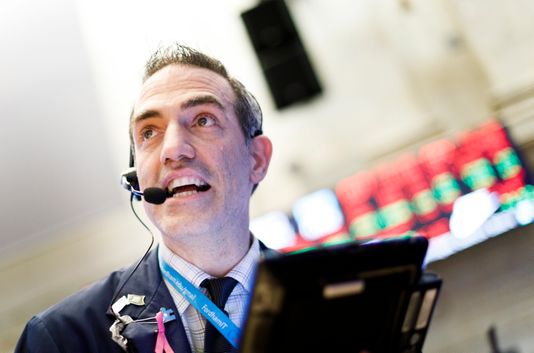
The Dow plunged 500 points on Thursday, exacerbating a 800-point drop the day before that marked the blue-chip average’s largest rout since February.
Investors remain on edge over tariff concerns and a recent jump in interest rates. President Donald Trump added fuel to the fire by castigating the Federal Reserve for continuing to hike a benchmark rate that affects both business and consumer loans.
The Dow Jones industrial average slid 546 points, or 2.13 percent, to close at 25,052.83. The index also fell below its average price over the past 200 days, a widely watched level that can provide support during sell-offs.
“This is another bad day,” said Brad McMillan, chief investment officer at Commonwealth Financial Network. “One of the discouraging things is the market really tried to rally during the day and it couldn’t hold on to it.”
A market correction – a decline of 10 percent or more from a peak – isn’t out of the question, said Brian Levitt, senior investment strategist at Oppenheimer Funds. But corrections occur almost every year and one now is unlikely to mean the end of the bull market. The Dow currently is 6.6 percent off its peak from Oct. 3.
“Volatility is the ticket to the game,” said Levitt. “Investors should have a plan, stick to it, invest in the long term and don’t worry about bursts of volatility. It happens.”
Still, Wall Street pros are debating whether the current slide is signaling more severe problems for a bull market that is more than nine years old. Here’s what they’re watching:
Bonds, gold
Are investors running for so-called safer investments? By Thursday’s measure, the answer is yes. Gold prices recorded their largest gain in over two years, while Treasuries jumped after a better-than-expected auction of 30-year notes.
Other indexes
The Standard & Poor’s 500, the large-company stock index, closed at 2,728.37 on Thursday, below its long-term trend line, or average price over the past 200 trading days. If the index consistently falls below its so-called 200-day moving average of 2,766, that could be a negative sign for the market. The S&P 500 is also down 6.9 percent from its record high.
The Russell 2000, an index of small-company stocks, also fell into official correction territory after sliding nearly 2 percent in Thursday’s rout. The index is now 11.2 percent below its August 31 record high.
What are tech stocks doing?
Tech stocks, the longtime market leaders, have suffered in the latest rout as Chinese tariffs, and recent security concerns have put these companies in the spotlight. The Nasdaq composite, which is packed with tech stocks, performed better than both the Dow and the Standard & Poor’s 500 on Thursday, but is still 9.6 percent from its all-time high in late August. Amazon ended Thursday down 2.04 percent; Apple was 0.88 percent lower; Netflix lost 1.47 percent; and Google declined 0.18 percent. Facebook ended higher.
Investors also got some good news on the economy early Thursday. An inflation reading on U.S. consumer prices in September came in lower than expected at 0.1 percent, which suggested that inflationary pressures are not ramping up.
The economy, too, remains healthy despite the volatility.
“Is this the big one? Is it 2008? I think the better comparison is where we were at the end of January,” said McMillan of Commonwealth Financial Network.
“Markets got ahead of themselves and had to readjust,” he continued, “but the economic fundamentals are solid.”